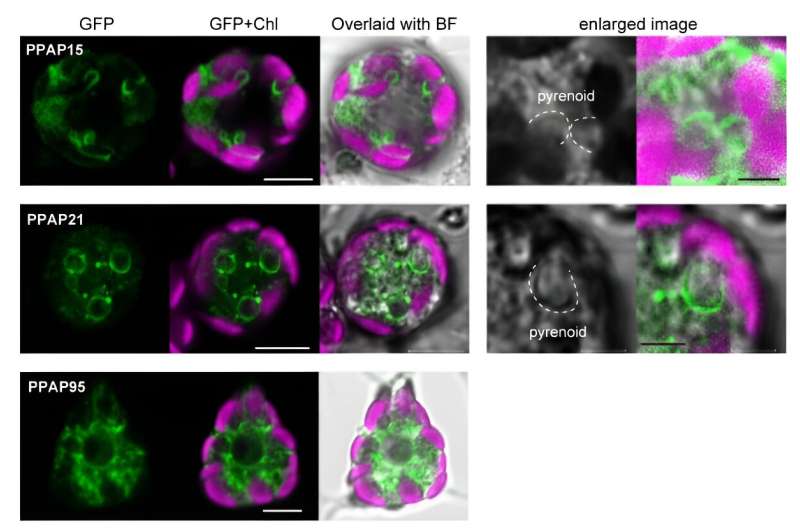This article has been reviewed according to Science X's editorial process and policies. Editors have highlighted the following attributes while ensuring the content's credibility:
fact-checked
trusted source
proofread
New findings suggest convergent evolution of algal CO₂-fixing organelles

Researchers at the University of Tsukuba identified the proteins of a CO2-fixing organelle, namely, "pyrenoid," in the marine algal group Chlorarachniophyta and revealed various pyrenoid-associated proteins among algal groups, suggesting the independent evolution of pyrenoids in different algal groups.
Plants and algae fix carbon through photosynthesis, which converts CO2 to organic carbon. This biological process is catalyzed by the Rubisco enzyme, the most abundant protein on Earth. In many algae, Rubisco is densely packed into a microcompartment called the pyrenoid, which plays an important role in the CO2 accumulation in aquatic environments.
Notably, approximately one-third of global carbon fixation is estimated to occur within algal pyrenoids. Apart from Rubisco, the primary component of pyrenoids, the pyrenoid-associated proteins in most algae remain unclarified.
In a new study published in the Proceedings of the National Academy of Sciences, pyrenoid-associated proteins in a marine chlorarachniophyte alga were identified through a proteomic approach. Some of these proteins are apparently involved in pyrenoid construction and CO2 concentration.
Interestingly, various pyrenoid-associated proteins have been reported among the algae studied to date, suggesting that CO2-fixing organelles evolved independently in each algal group. This is an example of convergent evolution at the molecular level.
Genetic engineering of plants using algal genes is underway to increase the photosynthetic performance. The pyrenoid-associated proteins reported herein are a potential basis for improving crop productivity in the future.
More information: Rena Moromizato et al, Pyrenoid proteomics reveals independent evolution of the CO2 -concentrating organelle in chlorarachniophytes, Proceedings of the National Academy of Sciences (2024). DOI: 10.1073/pnas.2318542121
Provided by University of Tsukuba





















